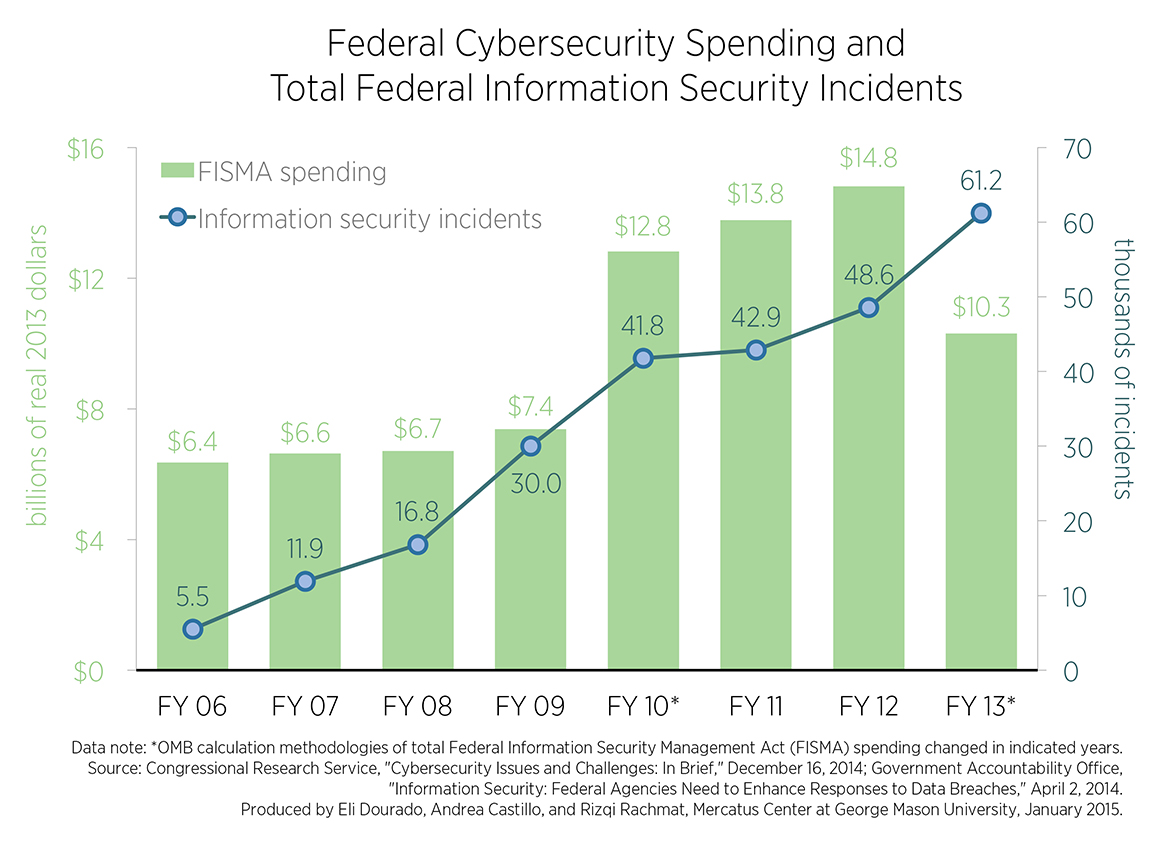 Last week the U.S. Court of Appeals for the 11th Circuit vacated a Federal Trade Commission order requiring medical diagnostic company LabMD to adopt reasonable data security, handing the FTC a loss on an important data security case. In some ways, this outcome is not surprising. This was a close case with a tenacious defendant which raised important questions about FTC authority, how to interpret “unfairness” under the FTC Act, and the Commission’s data security program.
Last week the U.S. Court of Appeals for the 11th Circuit vacated a Federal Trade Commission order requiring medical diagnostic company LabMD to adopt reasonable data security, handing the FTC a loss on an important data security case. In some ways, this outcome is not surprising. This was a close case with a tenacious defendant which raised important questions about FTC authority, how to interpret “unfairness” under the FTC Act, and the Commission’s data security program.
Unfortunately, the decision answers none of those important questions and makes a total hash of the FTC’s current unfairness law. While some critics of the FTC’s data security program may be pleased with the outcome of this decision, they ought to be concerned with its reasoning, which harkens back to the “public policy” test for unfairness that was greatly abused by the FTC in the 1970’s.
The most problematic parts of this decision are likely dicta, but it is still worth describing how sharply this decision conflicts with the FTC’s modern unfairness test. The court’s reasoning could implicate not only the FTC’s data security authority but its overall authority to police unfair practices of any kind.
(I’m going to skip the facts and procedural background of the case because the key issues are matters of law unrelated to the facts of the case. The relevant facts and procedure are laid out in the decision’s first and most lucid section. I’m also going to limit this piece to the decision’s unfairness analysis. There’s more to say about the court’s conclusion that the FTC’s order is unenforceable, but this post is already long. Interesting takes here and here.)
In short, the court’s decision attempts to rewrite a quarter century of FTC unfairness law. By doing so, it elevates a branch of unfairness analysis that, in the 1970s, landed the FTC in big trouble. First, I’ll summarize the current unfairness test as stated in the FTC Act. Next, I’ll discuss the previous unfairness test, the trouble it caused, and how that resulted in the modern test. Finally, I’ll look at how the LabMD decision rejects the modern test and discuss some implications.
The Modern Unfairness Test
If you’ve read a FTC complaint with an unfairness count in the last two decades, you’re probably familiar with the modern unfairness test. A practice is unfair if it causes substantial injury that the consumer cannot avoid, and which is not outweighed by benefits to consumers or competition. In 1994, Congress codified this three-part test in Section 5(n) of the FTC Act, which reads in full:
The Commission shall have no authority under this section or section 57a of this title to declare unlawful an act or practice on the grounds that such act or practice is unfair unless the act or practice [1] causes or is likely to cause substantial injury to consumers which [2] is not reasonably avoidable by consumers themselves and [3] not outweighed by countervailing benefits to consumers or to competition. In determining whether an act or practice is unfair, the Commission may consider established public policies as evidence to be considered with all other evidence. Such public policy considerations may not serve as a primary basis for such determination. [Emphasis added]
The text of Section 5(n) makes two things clear: 1) a practice is not unfair unless it meets the three-part consumer injury test and 2) public policy considerations can be helpful evidence of unfairness but are not sufficient or even necessary to demonstrate it. Thus, the three-part consumer injury test is centrally important to the unfairness analysis. Indeed, the three-part consumer injury test set out in Section 5(n) has been synonymous with the unfairness test for decades.
The Previous, Problematic Test for Unfairness
But the unfairness test used to be quite different. In outlining the test’s history, I am going to borrow heavily from Howard Beales’ excellent 2003 essay, “The FTC’s Use of Unfairness Authority: Its Rise, Fall, and Resurrection.” (Beales was the Director of the FTC’s Bureau of Consumer Protection under Republican FTC Chairman Timothy Muris.) Beales describes the previous test for unfairness:
In 1964 … the Commission set forth a test for determining whether an act or practice is “unfair”: 1) whether the practice “offends public policy” – as set forth in “statutes, the common law, or otherwise”; 2) “whether it is immoral, unethical, oppressive, or unscrupulous; 3) whether it causes substantial injury to consumers (or competitors or other businessmen).” …. [T]he Supreme Court, while reversing the Commission in Sperry & Hutchinson cited the Cigarette Rule unfairness criteria with apparent approval….
This three-part test – public policy, immorality, and/or substantial injury – gave the agency enormous discretion, and the FTC began to wield that discretion in a problematic manner. Beales describes the effect of the S&H dicta:
Emboldened by the Supreme Court’s dicta, the Commission set forth to test the limits of the unfairness doctrine. Unfortunately, the Court gave no guidance to the Commission on how to weigh the three prongs – even suggesting that the test could properly be read disjunctively.
The result was a series of rulemakings relying upon broad, newly found theories of unfairness that often had no empirical basis, could be based entirely upon the individual Commissioner’s personal values, and did not have to consider the ultimate costs to consumers of foregoing their ability to choose freely in the marketplace. Predictably, there were many absurd and harmful results.
According to Beales, “[t]he most problematic proposals relied heavily on ‘public policy’ with little or no consideration of consumer injury.” This regulatory overreach triggered a major backlash from businesses, Congress, and the media. The Washington Post called the FTC the “National Nanny.” Congress even defunded the agency for a time.
The backlash prompted the agency to revisit the S&H criteria. As Beales describes,
As the Commission struggled with the proper standard for unfairness, it moved away from public policy and towards consumer injury, and consumer sovereignty, as the appropriate focus…. On December 17, 1980, a unanimous Commission formally adopted the Unfairness Policy Statement, and declared that “[un]justified consumer injury is the primary focus of the FTC Act, and the most important of the three S&H criteria.”
This Unfairness Statement recast the relationship between the three S&H criteria, discarding the “immoral” prong entirely and elevating consumer injury above public policy: “Unjustified consumer injury is the primary focus of the FTC Act, and the most important of the three S&H criteria. By itself it can be sufficient to warrant a finding of unfairness.” [emphasis added] It was this Statement that first established the three-part consumer injury test now codified in Section 5(n).
Most importantly for our purposes, the statement explained the optional nature of the S&H “public policy” factor. As Beales details,
[I]n most instances, the proper role of public policy is as evidence to be considered in determining the balance of costs and benefits” although ”public policy can ‘independently support a Commission action . . . when the policy is so clear that it will entirely determine the question of consumer injury, so there is little need for separate analysis by the Commission.’” [emphasis added]
In a 1982 letter to Congress, the Commission reiterated that public policy “is not a necessary element of the definition of unfairness.”
As the 1980s progressed, the Unfairness Policy statement, specifically the three-part test for consumer injury, “became accepted as the appropriate test for determining unfairness…” But not all was settled. Beales again:
The danger of unfettered “public policy” analysis as an independent basis for unfairness still existed, however [because] the Unfairness Policy Statement itself continued to hold out the possibility of public policy as the sole basis for a finding of unfairness. A less cautious Commission might ignore the lessons of history, and dust off public policy-based unfairness. … When Congress eventually reauthorized the FTC in 1994, it codified the three-part consumer injury unfairness test. It also codified the limited role of public policy. Under the statutory standard, the Commission may consider public policies, but it cannot use public policy as an independent basis for finding unfairness. The Commission’s long and dangerous flirtation with ill-defined public policy as a basis for independent action was over.
Flirting with Public Policy, Again
To sum up, chastened for overreaching its authority using the public policy prong of the S&H criteria, the FTC refocused its unfairness authority on consumer injury. Congress ratified that refocus in Section 5(n) of the FTC Act, as I’ve discussed above. Today, under modern unfairness law, FTC complaints rarely make public policy arguments and only then to bolster evidence of consumer injury.
In last week’s LabMD decision, the 11th Circuit rejects this long-standing approach to unfairness. Consider these excerpts from its decision:
“The Commission must find the standards of unfairness it enforces in ‘clear and well-established’ policies that are expressed in the Constitution, statutes, or the common law.”
“An act or practice’s ‘unfairness’ must be grounded in statute, judicial decisions – i.e., the common law – or the Constitution. An act or practice that causes substantial injury but lacks such grounding is not unfair within Section 5(a)’s meaning.”
“Thus, an ‘unfair’ act or practice is one which meets the consumer-injury factors listed above and is grounded in well-established legal policy.”
And consider this especially salty bite of pretzel logic based on a selective citation of the FTC Act:
“Section 5(n) now states, with regard to public policy, ‘In determining whether an act or practice is unfair, the Commission may consider established public policies as evidence to be considered with all other evidence. Such public policy considerations may not serve as a primary basis for such determination.’ We do not take this ambiguous statement to mean that the Commission may bring suit purely on the basis of substantial consumer injury. The act or practice alleged to have caused injury must still be unfair under a well-established legal standard, whether grounded in statute, the common law, or the Constitution.” [emphasis added]
Yet those two sentences in 5(n) are quite clear when read in context with the full paragraph, which requires the three-part consumer injury test but merely permits the FTC to consider public policies as evidence. The court’s interpretation here is also undercut by the FTC’s historic misuse of public policy and Congress’s subsequent intent in Section 5(n) to limit the FTC overreach by restricting use of public policy evidence. Congress sought to restrict the FTC’s use of public policy; the 11th Circuit’s decision seeks to require it.
To be fair, the court is not exactly returning to the wild pre-Unfairness Statement days when the FTC thought public policy alone was sufficient to find an act or practice unfair. Instead, the court has developed a new, stricter test for unfairness that requires both consumer injury and offense to public policy.
After crafting this bespoke unfairness test by inserting a mandatory public policy element, the decision then criticizes the FTC complaint for “not explicitly” citing the public policy source for its “standard of unfairness.” But it is obvious why the FTC didn’t include a public policy element in the complaint – no one has thought it necessary, for more than two decades. (Note, however, that the Commission’s decision does cite numerous statutes and common law principles as public policy evidence of consumer injury in this case.)
The court supplies the missing public policy element for the FTC: “It is apparent to us, though, that the source is the common law of negligence.” The court then determines that “the Commission’s action implies” that common law negligence “is a source that provides standards for determining whether an act or practice is unfair….”
Having thus rewritten the Commission’s argument and decades of FTC law, the court again surprises. Rather than analyze LabMD’s liability under this new standard, the court “assumes arguendo that the Commission is correct and that LabMD’s negligent failure to design and maintain a reasonable data security program invaded consumers’ right of privacy and thus constituted an unfair act or practice.”
Thus, the court does not actually rely on the unfairness test it has set out, arguably rendering that entire analysis dicta.
Why Dicta?
What is going on here? I believe the court is suggesting how data security cases ought to be pled, even though it cannot require this standard under Section 5(n) – and perhaps would not want to, given the collateral effect on other types of unfairness cases.
The court clearly wanted to signal something through this exercise. Otherwise, it would have been much easier to have assumed arguendo LabMD’s liability under the existing three prong consumer injury unfairness test contained in the FTC’s complaint. Instead, the court constructs a new unfairness test, interprets the FTC’s complaint to match it, and then appears to render its unfairness analysis dicta.
So, what exactly is the court signaling? This new unfairness test is stricter than the Section 5(n) definition of unfairness, and thus any complaint that satisfies the LabMD test would also satisfy the statutory test. Thus, perhaps the court seeks to encourage the FTC to plead data security complaints more strictly than legally necessary by including references to public policy.
Had the court applied its bespoke standard to find that LabMD was not liable, I think the FTC would have had no choice but to appeal the decision. By upsetting 20+ years of unfairness law, the court’s analysis would have affected far more than just the FTC’s data security program. The FTC brings many non-data security cases under its unfairness authority, including illegal bill cramming and unauthorized payment processing and other types of fraud where deception cannot adequately address the problem. The new LabMD unfairness test would affect many such areas of FTC enforcement. But by assuming arguendo LabMD’s liability, the court may have avoided such effects and thus reduced the FTC’s incentive to appeal on these grounds.
Dicta or not, appeal or not, the LabMD decision has elevated unfairness’s “public policy” factor. Given the FTC’s misuse of that factor in the past, FTC watchers ought to keep an eye out.
—-
Last week’s LabMD decision will shape the constantly evolving data security policy environment. At the Charles Koch Institute, we believe that a healthy data security policy environment will encourage permissionless innovation while addressing real consumer harms as they arise. More broadly, we believe that innovation and technological progress are necessary to achieve widespread human flourishing. And we seek to foster innovation-promoting environments through educational programs and academic grant-making.


 Last week the U.S. Court of Appeals for the 11th Circuit
Last week the U.S. Court of Appeals for the 11th Circuit 

 The Technology Liberation Front is the tech policy blog dedicated to keeping politicians' hands off the 'net and everything else related to technology.
The Technology Liberation Front is the tech policy blog dedicated to keeping politicians' hands off the 'net and everything else related to technology.